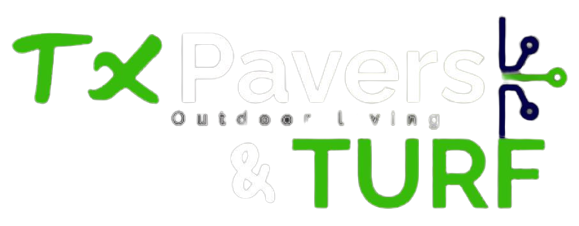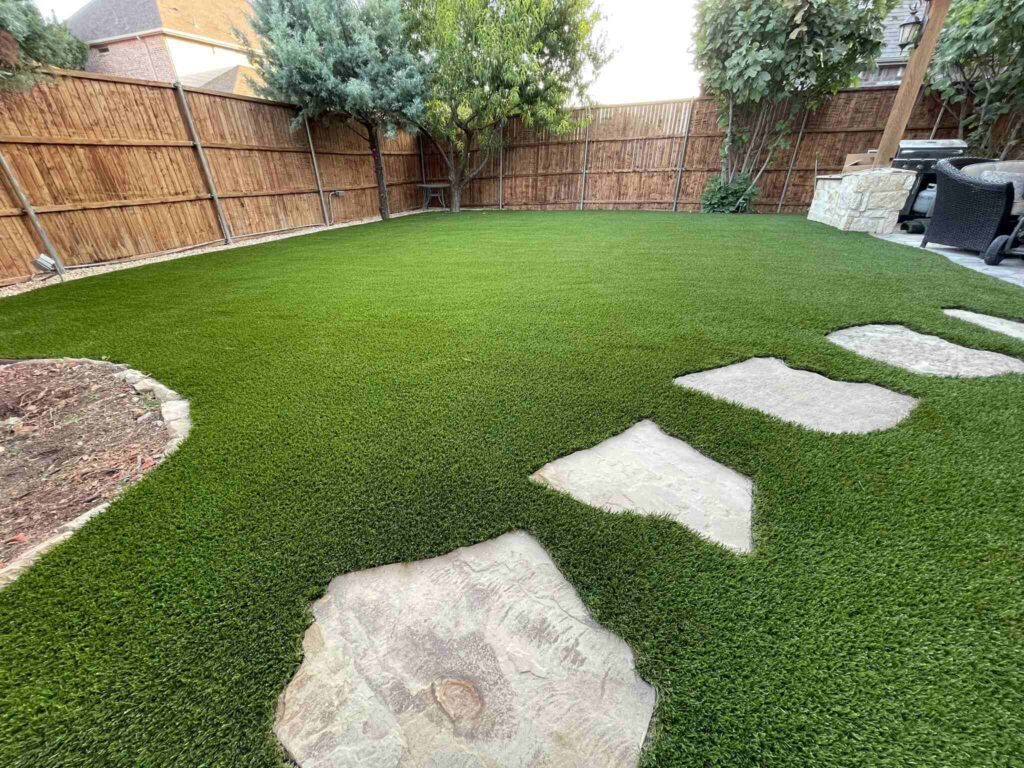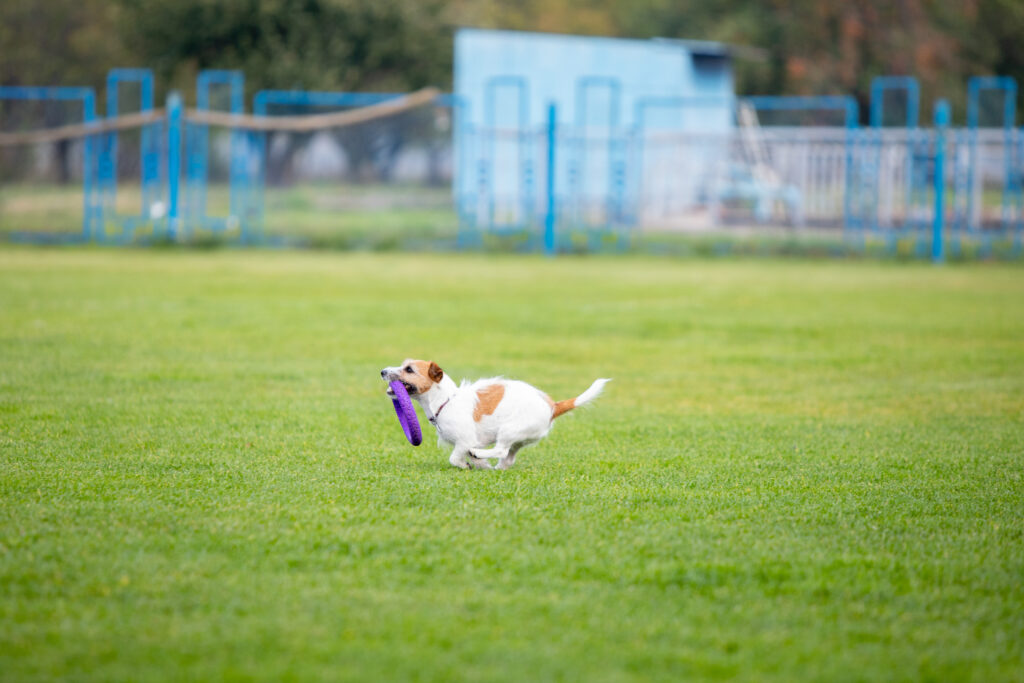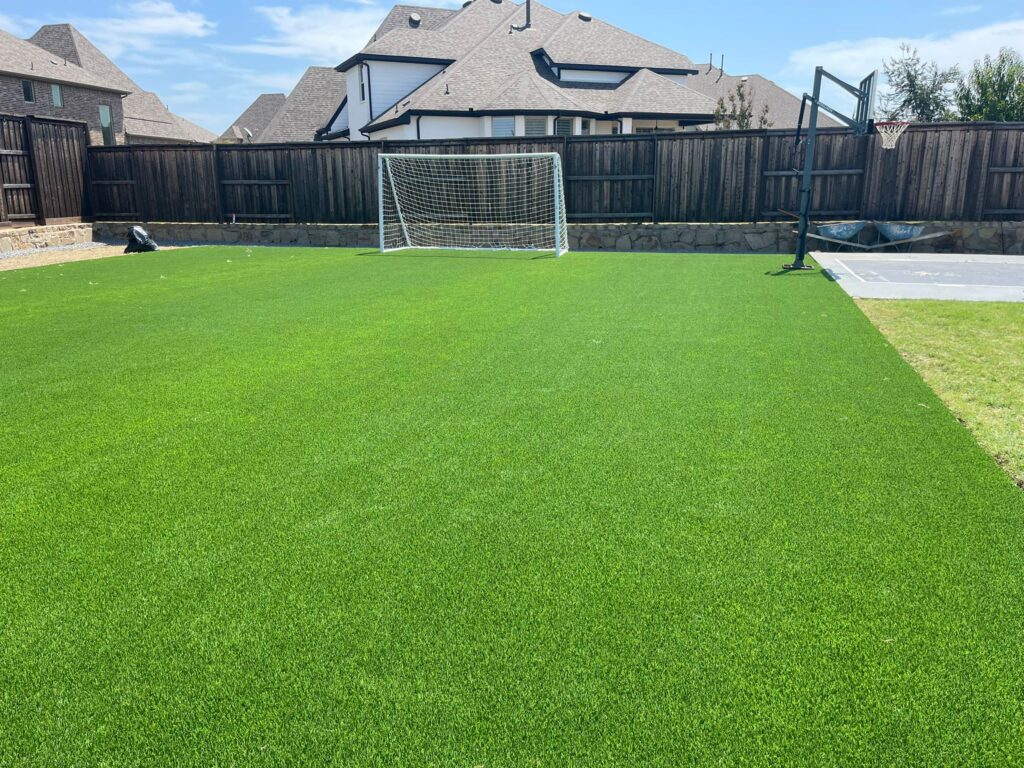how to clean artificial grass?
Remove debris like leaves or twigs with a leaf blower or rake to clean artificial grass effectively. Use mild soap and water to gently scrub the surface with a soft-bristled brush, focusing on stained areas. Rinse thoroughly with water after cleaning to remove any soap residue that could attract dirt later on. To keep your artificial grass looking fresh, consider using a specialized artificial grass cleaner that helps prevent odours and bacteria buildup. For tougher stains like pet urine, use a vinegar-water solution, as it helps neutralize the odour and disinfect the area. Regularly fluffing the synthetic fibres with a broom can help maintain their natural look and prevent matting. Finally, consider installing drainage holes in the turf if you live in an area with heavy rainfall to prevent water buildup and potential mould growth underneath the surface.
Artificial grass offers a low-maintenance, evergreen solution for homeowners and businesses alike. While it requires less upkeep than natural grass, it still needs some care to keep it looking pristine. This comprehensive guide will explore the steps and best practices for maintaining and cleaning artificial grass, ensuring it remains vibrant and healthy for years.
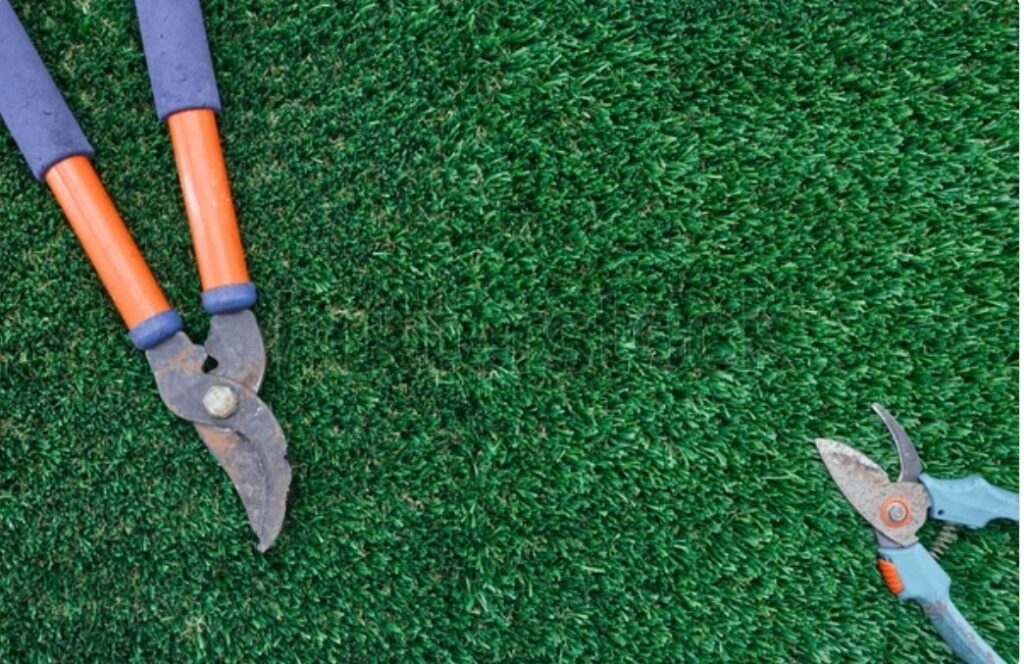
Tools and Materials You’ll Need
Before diving into the cleaning process, gather the following tools and materials to make your job easier:
- Garden hose
- Soft-bristle broom or brush
- A leaf blower or a plastic rake
- Mild detergent or specialized artificial grass cleaner
- Bucket and sponge
- Vinegar and water solution (1:1 ratio) for disinfecting
- Turf deodorizer (optional)
how to clean artificial grass Step-by-Step Guide
- Remove Debris
Start by removing loose debris, such as leaves, twigs, or other items that have fallen onto your lawn. Use a leaf blower or a plastic rake to collect the debris gently without damaging the grass fibres.
- Brush the Grass
Using a soft-bristle broom or brush, go over the entire area to uplift the grass fibres. This will help maintain the grass’s upright position and prevent matting. Brushing should be done in multiple directions to ensure an even finish.
- Rinse with Water
A simple rinse using a garden hose can dramatically improve the appearance of your artificial grass. Water pressure helps wash away dust, pollen, and minor spills. Ensure the water drains properly to avoid puddling.
- Spot Clean Stains
For any stubborn stains, use a mild detergent mixed with water. Apply the solution with a sponge or cloth and gently scrub the affected area. Rinse thoroughly to remove any soap residue. Avoid using harsh chemicals, as they can damage the grass fibres.
- Disinfect the Surface
To disinfect the artificial grass, particularly in areas where pets frequent, use a vinegar and water solution. Spray the mixture evenly over the lawn and let it sit for a few minutes before rinsing with water. This step helps eliminate bacteria and neutralize odours.
- Apply a Turf Deodorizer
If desired, apply a turf deodorizer to keep your artificial grass smelling fresh. Follow the product instructions for proper application and use.
- Inspect and Repair
Regularly inspect your artificial grass for any wear, tear, or damage. Making minor repairs promptly can prevent more significant issues and ensure your lawn stays in top condition.
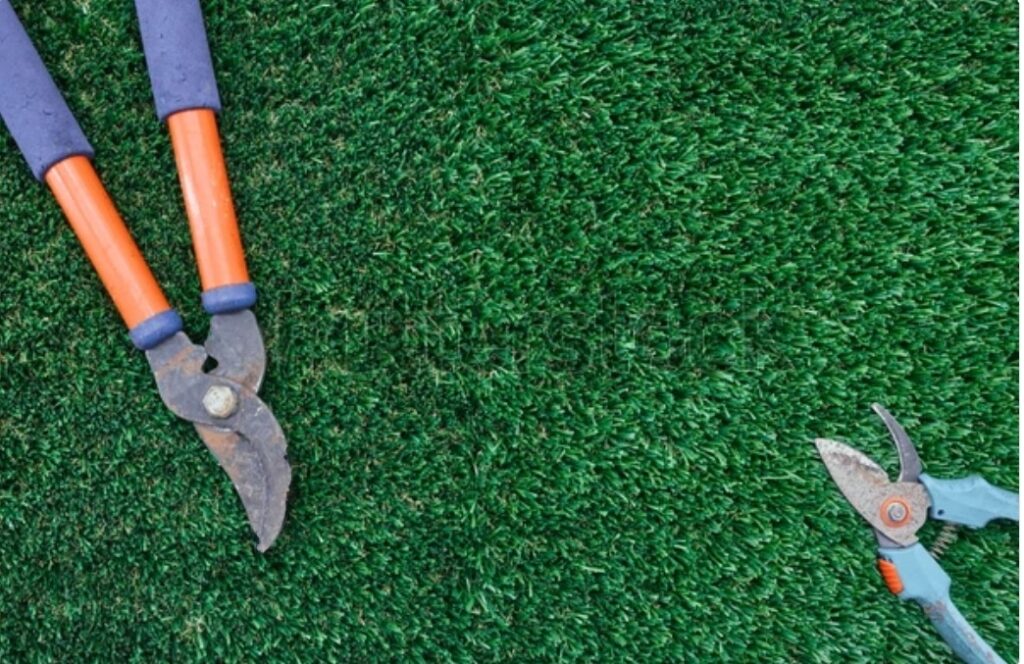
Seasonal Maintenance Tips
While regular cleaning is essential, adjusting your maintenance routine according to the seasons can also be beneficial.
Spring
- Inspect for any winter damage.
- Apply a mild detergent wash to refresh the lawn.
- Check for proper drainage.
Summer
- Water the lawn more frequently to cool it down.
- Brush the grass regularly to prevent matting from increased foot traffic.
Fall
- Remove fallen leaves promptly to prevent mould and mildew.
- Inspect joints and seams for any signs of wear.
Winter
- Remove snow and ice gently using a plastic shovel.
- Avoid using salt or harsh chemicals that can harm the turf.
Cleaning Up After Pets
If you have pets, maintaining the cleanliness of your artificial grass requires a few additional steps:
- Solid Waste: Pick up solid waste using a scoop or bag.
- Liquid Waste: Rinse the area with water immediately after your pet has urinated to prevent odours.
- Disinfect: Use a vinegar and water solution regularly to sanitize areas frequently used by pets.
Where to Find the Best Artificial Turf Installation Service
Cleaning and maintaining artificial grass is straightforward, but the quality of your turf installation plays a crucial role in its durability and appearance. That’s why choosing a professional installation service is essential.
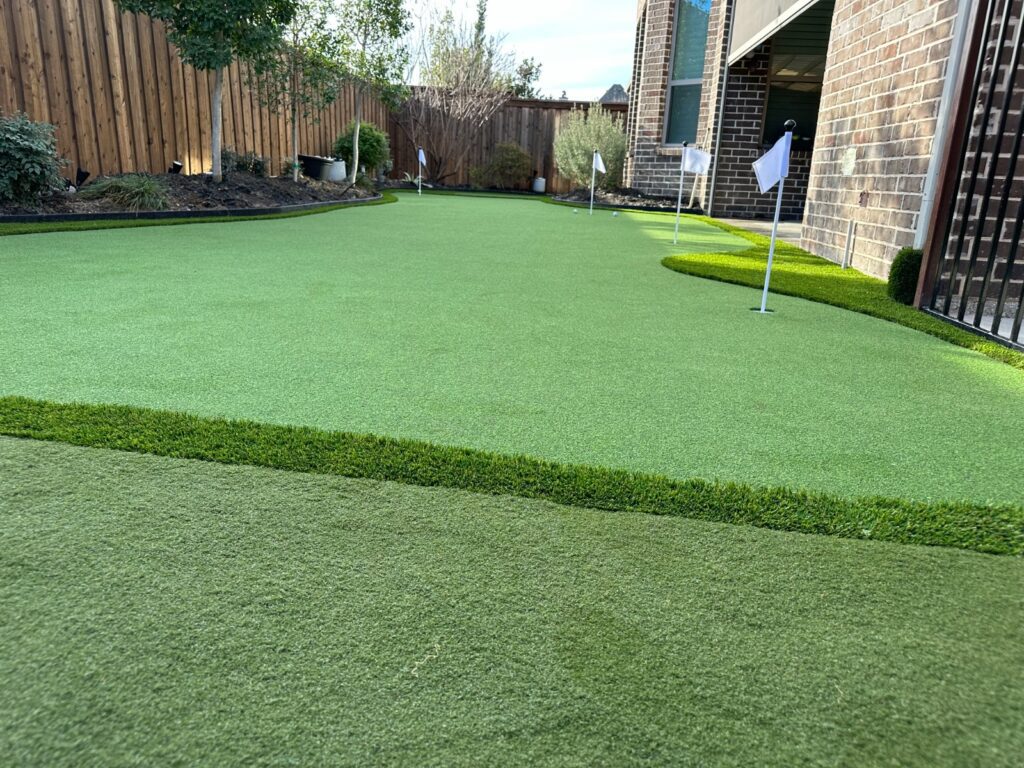
Why Choose Tx Pavers and Turf?
At Tx Pavers and Turf, we specialize in providing top-notch artificial turf installation services. Here’s why homeowners trust us:
- Expertise: Our team is composed of seasoned professionals with a wealth of experience installing artificial turf.
- Quality Materials: We use only the highest quality materials to ensure your artificial grass looks and feels natural.
- Customized Solutions: We tailor our services to meet your needs and preferences, ensuring a perfect fit for your space.
- Satisfaction of Customers: Our dedication to greatness has given us a name for excellent customer service and happiness.

Benefits of Professional Installation
- Proper Drainage: Ensures efficient water drainage, preventing puddles and waterlogging.
- Seamless Appearance: Professional installation guarantees a smooth, seamless look without visible seams.
- Longevity: Expertly installed turf withstands the test of time, providing long-lasting beauty and functionality.
Visit Tx Pavers and Turf to get started today!
FAQ&More
Should You Pressure-Wash Artificial Grass?
Pressure washing is a popular method for cleaning various outdoor surfaces, but is it suitable for artificial grass? While pressure washing can effectively remove dirt and debris, it can also be too harsh if not done correctly. The high pressure can damage the synthetic fibres, leading to wear and tear over time. To prevent damage, use a pressure washer wither setting and keep the nozzle safe from the grass to avoid damage.
What is the most effective method for cleaning artificial grass?
One effective method of cleaning artificial grass is regularly brushing the surface with a stiff-bristle broom to remove debris and keep the blades upright. A leaf blower can also help clear away leaves, dirt, and other larger particles that may have accumulated on the turf. For tougher stains or odours, a mild detergent and water mixture can be applied using a spray bottle and then rinsed with clean water.
Another helpful technique is investing in a specialized artificial grass cleaner to break down bacteria, mould, and other organic matter without damaging the synthetic fibres. These cleaners often come in concentrated form and can be diluted with water before spraying onto the turf. Additionally, scheduling professional deep cleaning services annually can help ensure your artificial grass remains fresh-looking and free from deep-seated grime.

What is the best tool to clean artificial grass?
The best tool for cleaning artificial grass is a stiff-bristled brush or a rake designed explicitly for synthetic turf. These tools are gentle enough to avoid damaging the grass fibres while removing debris, leaves, and pet hair.
Another helpful tool for cleaning artificial grass is a leaf blower or vacuum with adjustable settings to ensure proper suction without harming the turf. Avoid using sharp tools or metal brushes that can cause irreparable damage to the synthetic fibres. Additionally, regular maintenance, like sweeping and spraying with water, can help prolong the lifespan of your artificial grass and keep it looking vibrant year-round.
Can you clean artificial grass with soap and water?
Absolutely, soap and water are safe and effective ways to clean artificial grass. Use a mild, biodegradable soap mixed with water to tackle dirty spots and spills. Apply the soapy solution to the affected area and scrub gently with a soft brush. Rinse thoroughly with water to remove any soap residue, ensuring that pets and children can safely enjoy the lawn.
Can I Spray Vinegar on Artificial Grass?
Vinegar is a natural disinfectant and deodorizer, making it a valuable option for cleaning artificial grass. Dilute white vinegar with water (one part vinegar to one part water) and spray it onto the grass. This solution can help eliminate odours and kill bacteria without harming the synthetic fibres.

Does Boiling Water Damage Artificial Grass?
Boiling water is not recommended for cleaning artificial grass as it can cause significant damage. The high temperature can melt or warp the synthetic fibres, ruining the appearance and functionality of your lawn. Stick to using cool or lukewarm water for rinsing and cleaning purposes.
How do I stop my artificial grass smelling?
Use a mild detergent mixed with water to clean the surface and remove any debris or organic matter causing the odour. Rinse the grass thoroughly with water after cleaning to eliminate any leftover detergent residue.
Another helpful tip is to use deodorizing products specifically designed for artificial grass. These products can help neutralize unpleasant odours and leave your synthetic lawn smelling fresh and clean. Follow the manufacturer’s instructions when using these products to ensure optimal results and avoid damaging your artificial grass.
What kills algae on artificial grass?
One effective method to kill algae on artificial grass is by using a mixture of water and vinegar. Vinegar’s acidity helps to break down the algae, making it easier to clean and prevent future growth. Additionally, the natural properties of vinegar make it an environmentally friendly option for maintaining artificial grass surfaces.
Another way to combat algae on artificial grass is using commercial algaecide products specifically designed for outdoor use. These products contain chemicals that target algae growth without harming the grass itself. Regular application of algaecides can help prevent algae from taking root and spreading on artificial turf, ensuring a clean and vibrant appearance all year round.
How do you keep artificial grass green?
Regular cleaning is essential to maintaining artificial grass’s vibrancy. Use a leaf blower or brush to remove debris and dirt that can accumulate and dull the colour. Additionally, rinsing the grass with water occasionally will help refresh its appearance and keep it looking green.
Quickly clean up any spills and treat pet urine spots to prevent them from causing lasting damage to the grass. Finally, applying a UV protectant spray can help shield the artificial grass from sun damage and fading, ensuring it stays lush and green for years.
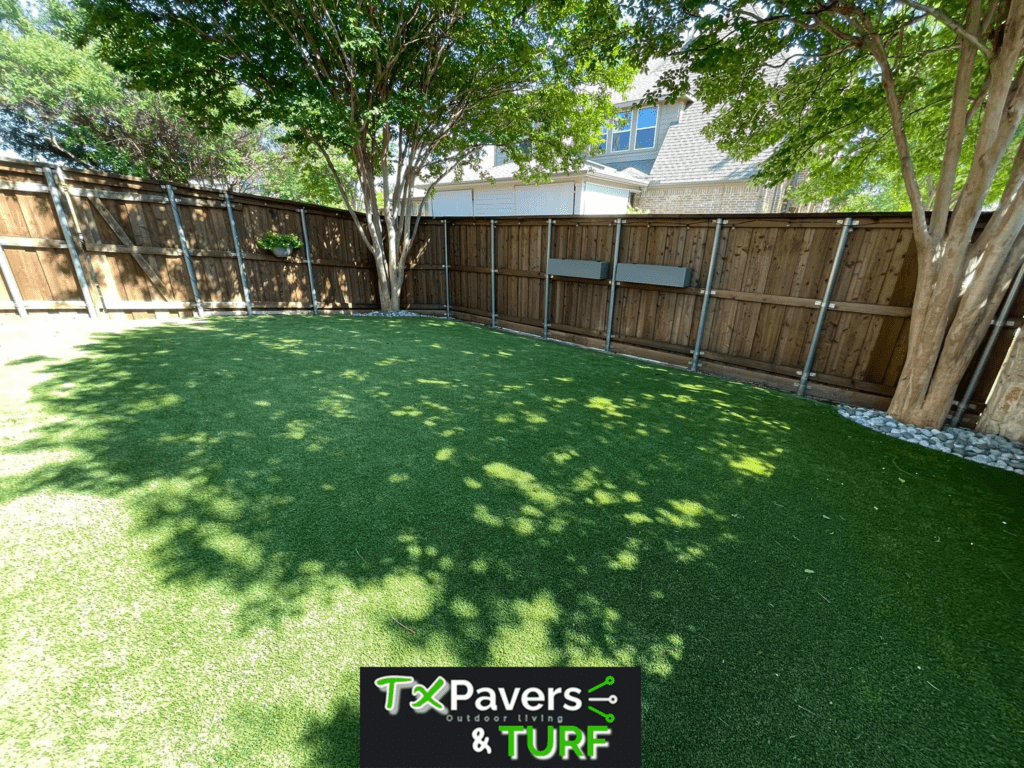
Why is my artificial grass turning black?
discolouration. To prevent this issue, it’s essential to regularly clean and sanitize your artificial turf to maintain its apThere are several reasons why your artificial grass may be turning black. One common cause is mould and mildew buildup, especially in areas with poor drainage or excessive moisture. These fungal growths can thrive on the grass’s synthetic fibres, leading to discolouration over time. Another possible reason is the accumulation of dirt, dust, and debris on the surface of your artificial lawn. This layer of grime can attract and trap sunlight, causing heat retention that can lead to a darkening effect on the grass.
Pet urine and faeces can contribute to the darkening of artificial grass. The chemicals and compounds in animal waste can react with the synthetic material, resulting in stains and pearance and longevity.
What is the best disinfectant for artificial grass?
When it comes to maintaining artificial grass, choosing the proper disinfectant is crucial for keeping it clean and germ-free. One of the most effective disinfectants for synthetic grass is a mixture of water and white vinegar. This natural solution kills bacteria and germs and helps neutralize any foul odours, leaving your artificial turf fresh and clean.
Another excellent option is hydrogen peroxide, known for its powerful antibacterial properties. Hydrogen peroxide can effectively disinfect artificial grass without damaging the synthetic fibres when diluted with water. Additionally, a mild soap or detergent solution can help remove dirt and bacteria from the surface of artificial grass, keeping it hygienic and safe for use.
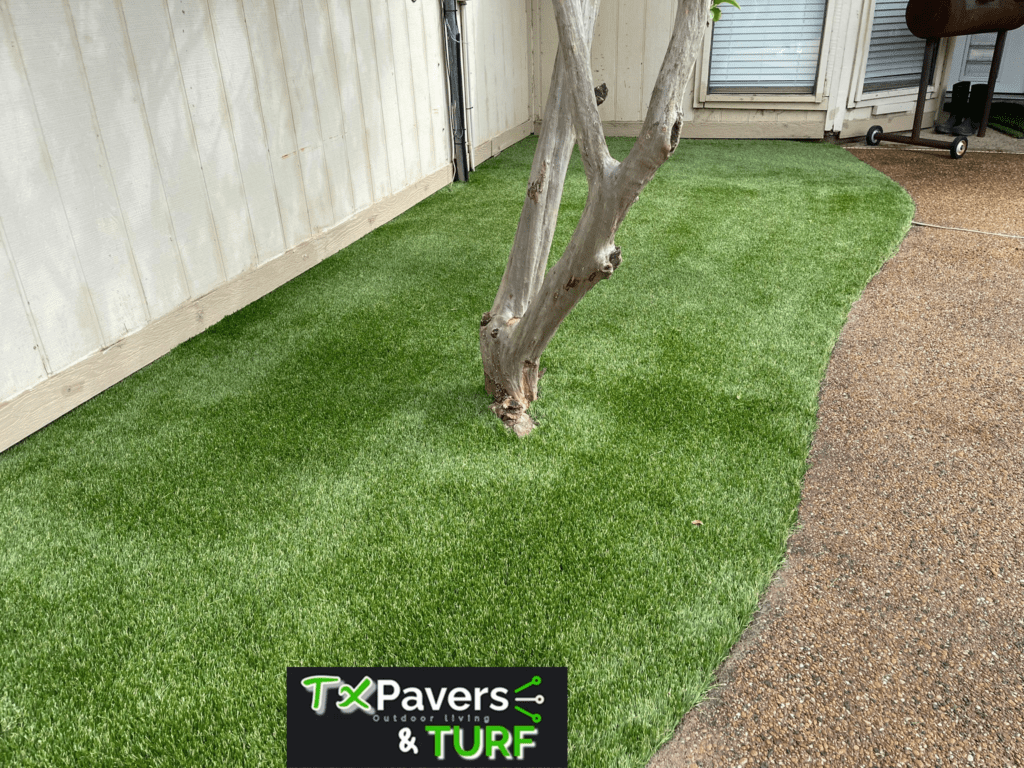
Conclusion
Maintaining artificial grass is relatively straightforward but requires regular care to keep it looking its best. This guide provides all the information you need, from understanding the safest cleaning methods to knowing how to tackle specific issues like odours and algae. Now that you’re equipped with these tips and tricks, keeping your artificial grass clean and green should be a breeze.
